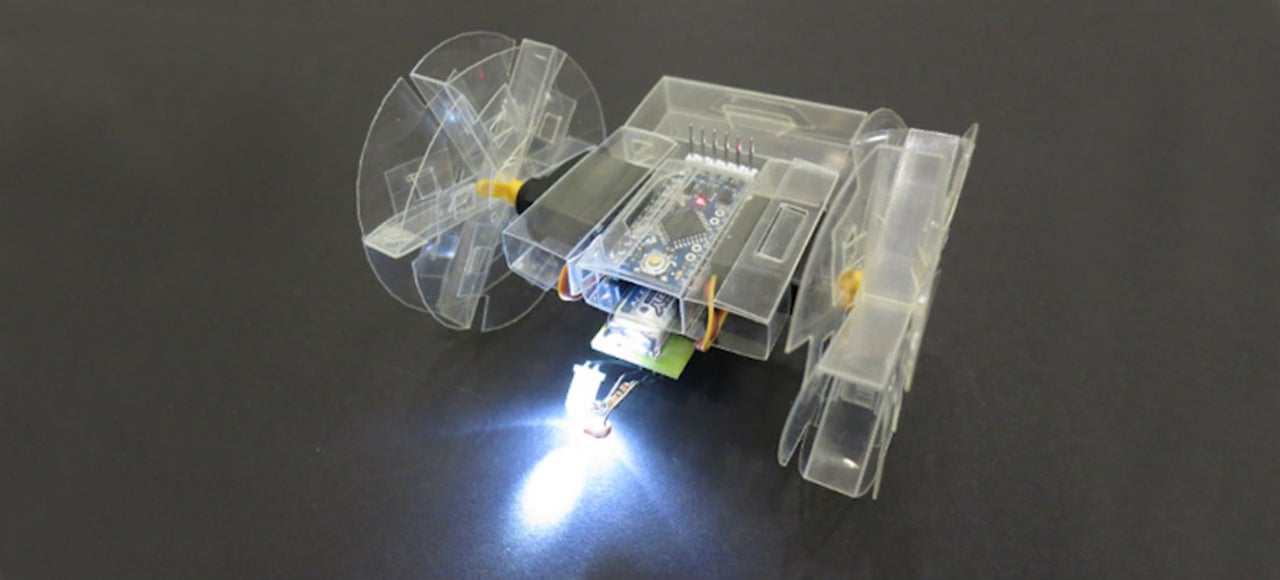TinkerBots (formerly known as Kinematics) let you make robots that are easy enough for a child to build. The pieces snap together easily, and you can make things much more complex than a robot dog too. Want to train the dog to walk? Just switch on the Tinketbot’s Power Brain’s recording mode and twist and turn the dog manually. Press play, and it repeats the motion you just programmed. How awesome is that?


The Power Brain has a built-in gyroscope and accelerometer, speaker, Bluetooth 4.0 connectivity, and a rechargeable lithium-polymer battery.


It’s Arduino compatible too, so you can build even more complex creations if you want. You can also program robot movements from your mobile device. Other active modules include motors, pivots, grabbers, and IR and light sensors. You can update any or all of them through the Power Brain when there’s new software available.
TinkerBots are even compatible with LEGO and Technic pieces with the proper adapter blocks in place. The cubes are roughly the size of 4 X 1 LEGO brick, cuboids roughly 4 x 2, and there are two different kinds of angled prism pieces.
This is going to be a great toy for your kids. And you of course. You can get yourself a basic set for $159(USD) on Indiegogo, with bigger sets ranging from $299 to $499.

![]()




 Savioke, a robotics startup out of Sunnyvale led by the former CEO of the now-defunct but influential Willow Garage robotics startup, is announcing a seed round of funding today, $2 million from Jerry Yang’s AME Cloud Ventures, Google Ventures, Morado Venture Partners and other individual investors. It is planning to use the money to develop and build its first robot, an as-yet unnamed piece of…
Savioke, a robotics startup out of Sunnyvale led by the former CEO of the now-defunct but influential Willow Garage robotics startup, is announcing a seed round of funding today, $2 million from Jerry Yang’s AME Cloud Ventures, Google Ventures, Morado Venture Partners and other individual investors. It is planning to use the money to develop and build its first robot, an as-yet unnamed piece of… 
 The tables have been turned – once in a legend, there was a man known as John Henry, who wanted to prove that humans are better than machines by besting a steam powered hammer. This time around, we have a machine that intends to prove it is better than humans at a mobile puzzle game known as Threes, and this unique robot does seem to be playing from a position of strength.
The tables have been turned – once in a legend, there was a man known as John Henry, who wanted to prove that humans are better than machines by besting a steam powered hammer. This time around, we have a machine that intends to prove it is better than humans at a mobile puzzle game known as Threes, and this unique robot does seem to be playing from a position of strength.